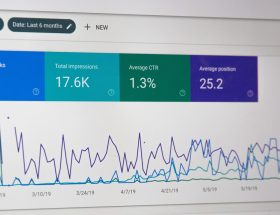Real estate is the accredited investor’s original best friend. This asset class consistently builds wealth over the long term for those who build a portfolio around properties and other property-adjacent assets. Unfortunately, only high net worth investors have traditionally pumped their money into this commodity asset class. That’s changing in the present, however. More homeowners and other borrowers and investors realize the power and potential of the real estate market and build their futures around its growth.
If you’ve thought about getting into the real estate market yourself but don’t know where to start, this article is for you.
Real estate is a dual-positive investment opportunity.

Investors love asset classes that offer benefits in more than one area. Some dividend aristocrats provide this to their shareholders (and accredited investor ranks love these assets too). Still, often, a dual-positive asset must come from outside the arena of the stock market. Shares that act as fantastic growth stocks – those that you’d want to hold solely, or primarily, for their long-term growth factor – and also provide their owners with good dividends (for example: Greater than about a 5% yearly return) are few. Yet in the alternative investing world of real estate, you can have your cake and eat it too!
The property market is coasting along with a surging uptrend over decades. Although short-term crashes can spell disaster for short-held strategies in this market, inclusions like title insurance are a must for anyone thinking of getting into the property investment marketplace. Also, rental prices continue to inflate alongside sales.
This means that each year you can expect a boost to any rental income you are collecting, as well as an increase to the underlying value of the property itself. Selling the home after a period of ten or more years will give you access to both the monthly income and the eventual inflation in the commodity’s price tag.
Tackle the market with a fund instead.

Rather than diving straight into the property market, some investors opt for minimum risk strategies that can still provide the benefits of real estate while negating much of the human factors that create instability. Like those offered on Yieldstreet, a real estate fund can provide similar dividend payouts to those that property ownership in the physical world creates.
Yieldstreet is different from most other REIT and real estate indexes. The analysts at Yieldstreet focus on bonding commercial property assets with other high-yielding residential buildings in order to mitigate risk while boosting dividends to an astounding 8% or better. This means that your money will grow at a fast rate of return. Of course, doing your due diligence is crucial for any investment opportunity, so read some Yieldstreet reviews, Yieldstreet complaints, and a prospectus of past earnings and future projections (which can be found on Yieldstreet’s homepage).
The property market relies on borrower and lender relationships.

Finally, it’s important to remember that the property market’s investment landscape is a complex one. Unlike the stock market, the property is most often bought and sold while utilizing capital borrowed from a lender – typically your bank or other local financial institution.
This means that you can begin to earn dividend income through the management of rental properties, or proceeds from the sale of a flipped home immediately, before raising the capital required for the purchase yourself. Many landlords rely on private money lenders for investment loans of this nature. This gives you the ability to pay down your mortgage with the rental income in the first years and then begin to ramp up your profits after eating away at a chunk of the principal.
The real estate market is a fascinating place for retail investors. Interacting with this space is the best way to create long-term growth, but make sure you always begin with your own due diligence.









